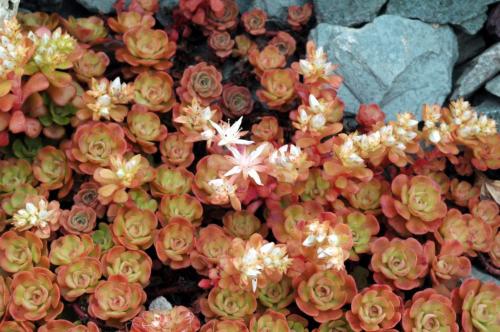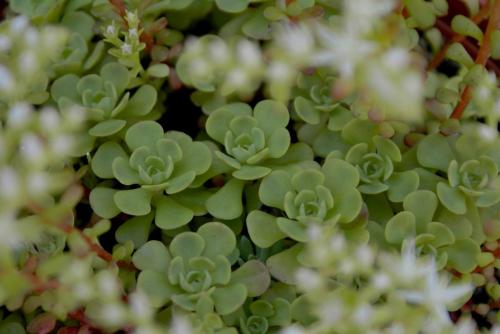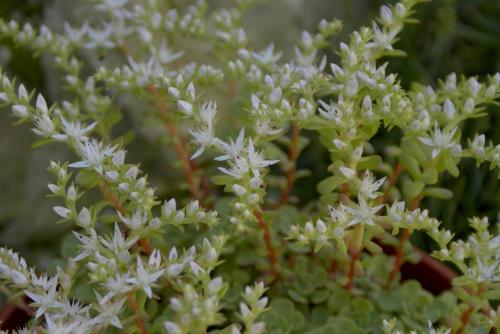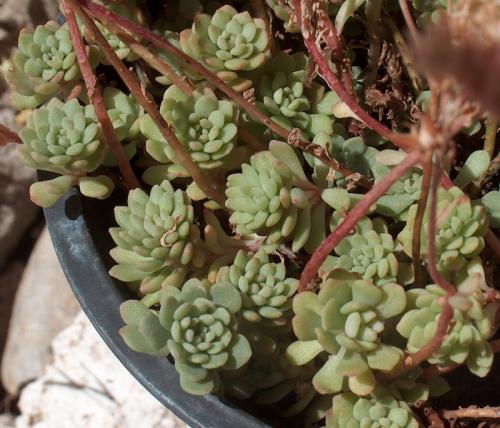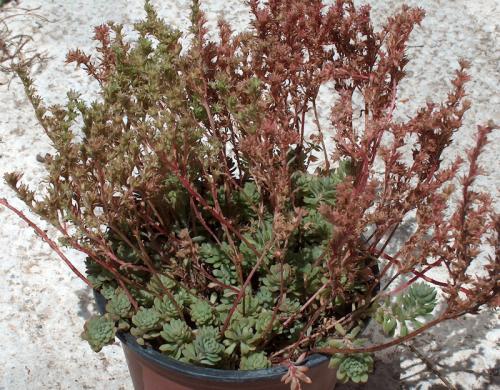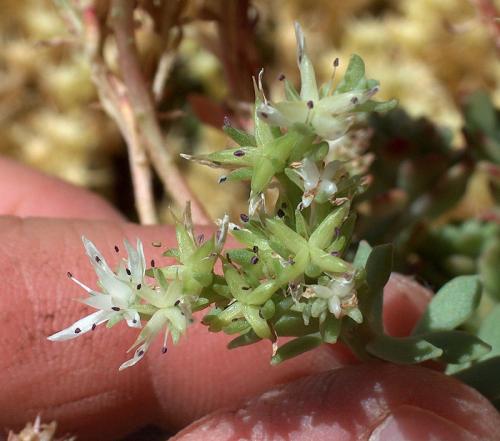GLAUCOPHYLLUM R. T. Clausen, 1946
Distribution : USA (North Carolina to Maryland: Appalachian Highlands, endemic); shady places.
Description (according to IHSP 2003) :
Caespitose perennial herbs with creeping and rooting much-branched stems.
Leaves alternate, oblanceolate to spatulate, with obtuse papillose tips, flat, base petiole-like, 6.5 - 17,8 x 2,2 - 4,5 mm, pale green or blue-green.
Inflorescences : Flowering branches erect, 3,7 - 17,5 cm, inflorescences cymes with 3 bracts, bracts leaf-like but smaller.
FIowers 4-merous, sessile, sepals broadly sessile, free, unequal, linear-lanceolate, tip obtuse and papillose, subterete, 3,6 - 6,3 x 0,9 - 1,6 mm, green, divergent, petals free, lanceolate, acuminate, minutely hooded, white, ± 6,5 mm, filaments white, anthers dark red.
Cytology: 2n = 28, 44, 44 -49, ±46.
S. nevii according to Charles Uhl is most definitely not the same plant as and therefore not a synonym of S. glaucophyllum which it resembles closely. It is cytologically distinct and it is not in cultivation.
Ray Stephenson writes (Sedum, Cultivated Stonecrops, 1994, p. 198) : "Small, compact rosettes with leaves arranged in spirals, and white, 4-partite, stellate flowers with free petals are the best indicator... Sedum nevii has sepals almost as long as petals"
